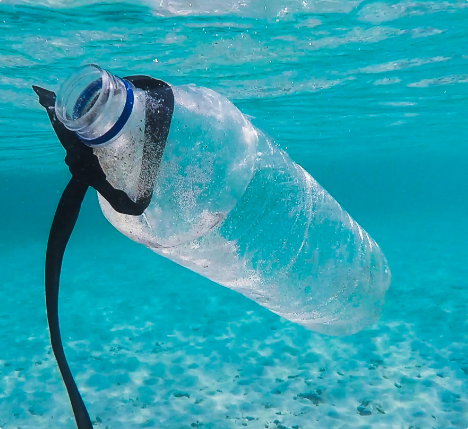High-Density Polyethylene (HDPE) is a thermoplastic polymer made from petroleum. HDPE is known for its high strength-to-density ratio, excellent chemical resistance, and ability to withstand high temperatures, making it a popular choice in various industries.
HDPE was first discovered by German chemists Karl Ziegler and Erhard Holzkamp in the 1950s. They developed a process for producing high-density polythene, which involved using a catalyst to polymerise ethylene gas under high pressure. HDPE quickly gained popularity in the plastics industry due to its unique material properties.
HDPE (High-Density Polyethylene) is a widely used thermoplastic polymer with various applications across various industries. HDPE has become a popular material in manufacturing and construction because it is known for its strength, durability, and resistance to chemicals. In recent years, however, concerns have been raised about the environmental impact of plastic waste, including HDPE. As a result, recycling HDPE has become essential to reducing waste and minimising the environmental impact of plastics.

Formal Definition:
HDPE is a thermoplastic polymer that is made from the monomer ethylene. It has a high strength-to-density ratio, meaning it is strong yet lightweight. HDPE is classified as a type of polythene with a density greater than 0.941 g/cm³.
Material Properties:
HDPE has several unique material properties, making it a popular choice in various applications. Some of its notable properties include:
- High strength-to-density ratio: HDPE is a solid and rigid plastic yet lightweight.
- Chemical resistance: HDPE has excellent resistance to chemicals, making it suitable for use in harsh environments.
- Thermal resistance: HDPE can withstand high temperatures without melting or deforming.
- Weather resistance: HDPE is resistant to UV radiation and can withstand exposure to the sun without degrading.
- Water resistance: HDPE is waterproof, making it ideal for use in water pipes and other water-related applications.
Industrial Usage:
HDPE is used in various industrial applications due to its high strength-to-density ratio and chemical resistance. Some of its common uses include:
- Water pipes: HDPE pipes are commonly used in water distribution systems due to their durability and resistance to corrosion.
- Chemical tanks: HDPE is resistant to a wide range of chemicals, making it ideal for chemical storage tanks.
- Packaging: HDPE is often used in packaging materials, such as bottles and containers, due to its strength and durability.
- Automotive parts: HDPE is used in automotive parts, such as fuel tanks and bumpers, due to its high strength and ability to withstand impact.
- Construction materials: HDPE is used in various construction materials, such as pipes, sheeting, and geomembranes, due to its durability and resistance to environmental factors.
Application Areas:
HDPE is used in many application areas due to its unique material properties. Some of its common application areas include:
- Water management: HDPE is used in water pipes, irrigation systems, and other water-related applications due to its durability and water resistance.
- Chemical storage: HDPE is used in chemical storage tanks, drums, and containers due to its excellent chemical resistance.
- Packaging: HDPE is commonly used in packaging materials, such as bottles and containers, due to its strength and durability.
- Agriculture: HDPE is used in agricultural applications, such as irrigation systems and greenhouse films, due to its durability and resistance to environmental factors.
- Construction: HDPE is used in various construction materials, such as pipes, sheeting, and geomembranes, due to its durability and resistance to environmental factors.
Consumer Product Examples:
HDPE is used in various consumer products due to its strength, durability, and water resistance. Some of its common consumer product examples include:
- Bottles and containers: HDPE is commonly used in bottles and containers for products such as milk, juice, and laundry detergent.
- Toys: HDPE is used
Recycling:
HDPE is widely recyclable, which reduces waste and environmental impact. Recycling HDPE involves:
- Shredding the plastic into small pieces.
- Melting it down.
- Reforming it into new products.
Recycled HDPE can be used in various applications, including packaging materials, construction materials, and consumer products.
Recycling HDPE (High-Density Polyethylene) is an essential aspect of reducing waste and minimizing the environmental impact of plastics. HDPE is a thermoplastic polymer that can be easily recycled using various methods, including mechanical, chemical, and energy recovery.
Process of recycling HDPE:
The mechanical recycling process involves shredding and melting HDPE into small pellets that can be used to make new products. The process begins with collecting used HDPE products, which are then sorted, cleaned, and processed. The HDPE is then shredded into small pieces, melted down, and re-formed into new products.
Chemical recycling, on the other hand, involves breaking down HDPE into its constituent molecules using chemical processes. The process involves heating the HDPE to high temperatures in the presence of a catalyst to break down the polymer chains into smaller molecules. The resulting molecules can then be purified and used to make new HDPE products.
Advantages:
Recycling HDPE has several advantages:
- It reduces the amount of plastic waste that ends up in landfills or the environment, thereby reducing the environmental impact of plastics.
- It conserves energy and natural resources since recycled HDPE requires less energy and raw materials to produce than virgin HDPE.
- Recycling HDPE creates job opportunities in the recycling and manufacturing industries.
Disadvantages:
There are also some disadvantages associated with recycling HDPE. The primary disadvantage is the cost of the recycling process, which can be higher than the cost of producing virgin HDPE. In addition, recycled HDPE may not have the same properties as pure HDPE, which may limit its use in specific applications.
Environmental and Global Impact:
Recycling HDPE positively impacts the environment since it reduces the amount of plastic waste that ends up in landfills or the environment. This, in turn, reduces the environmental and health risks associated with plastic debris. Recycling HDPE also conserves energy and natural resources since it requires less energy and raw materials than virgin HDPE.
On a global level, recycling HDPE has the potential to reduce greenhouse gas emissions and mitigate climate change. Producing virgin HDPE requires large amounts of fossil fuels, which release greenhouse gases into the atmosphere. By recycling HDPE, we can reduce the amount of fossil fuels used in producing new HDPE products, thereby reducing greenhouse gas emissions.
Market Price Developments:
The price of HDPE can fluctuate depending on supply and demand. Historically, the cost of HDPE has been relatively stable, but there have been some fluctuations in recent years. For example, in 2018, the price of HDPE increased due to increased demand from the construction and automotive industries.
Future Market Prognosis:
The future of the HDPE market looks promising, as demand is expected to continue growing in various industries. The construction industry is expected to be a significant growth driver, as HDPE is used in different construction materials, including pipes, sheeting, and geomembranes. The packaging industry is also expected to continue driving demand for HDPE, as it is widely used in bottles, containers, and other packaging materials. In addition, the growing trend toward sustainability is expected to increase demand for recyclable plastics, which bodes well for the future of HDPE.
HDPE – A high strength plastic:
HDPE (High-Density Polyethylene) is a versatile and widely used thermoplastic polymer with numerous industrial and consumer applications. Its strength, durability, and chemical resistance make it an attractive material for many manufacturing and construction processes. However, the environmental impact of plastic waste, including HDPE, cannot be ignored. The recycling of HDPE is an essential step towards reducing plastic waste and minimising the environmental impact of plastics.
Through examining the HDPE recycling process, its advantages and disadvantages, and its environmental and global impact, we can see that HDPE has the potential to be a sustainable material if handled and recycled correctly. As the world becomes increasingly aware of the need for sustainable practices, the importance of recycling HDPE will continue to grow.
We urge all professionals in the plastics industry, recycling industry, and university students to continue researching and developing sustainable solutions for the use and disposal of plastics. By working together, we can ensure that the benefits of HDPE continue to be enjoyed while minimising the environmental impact of plastic waste.






